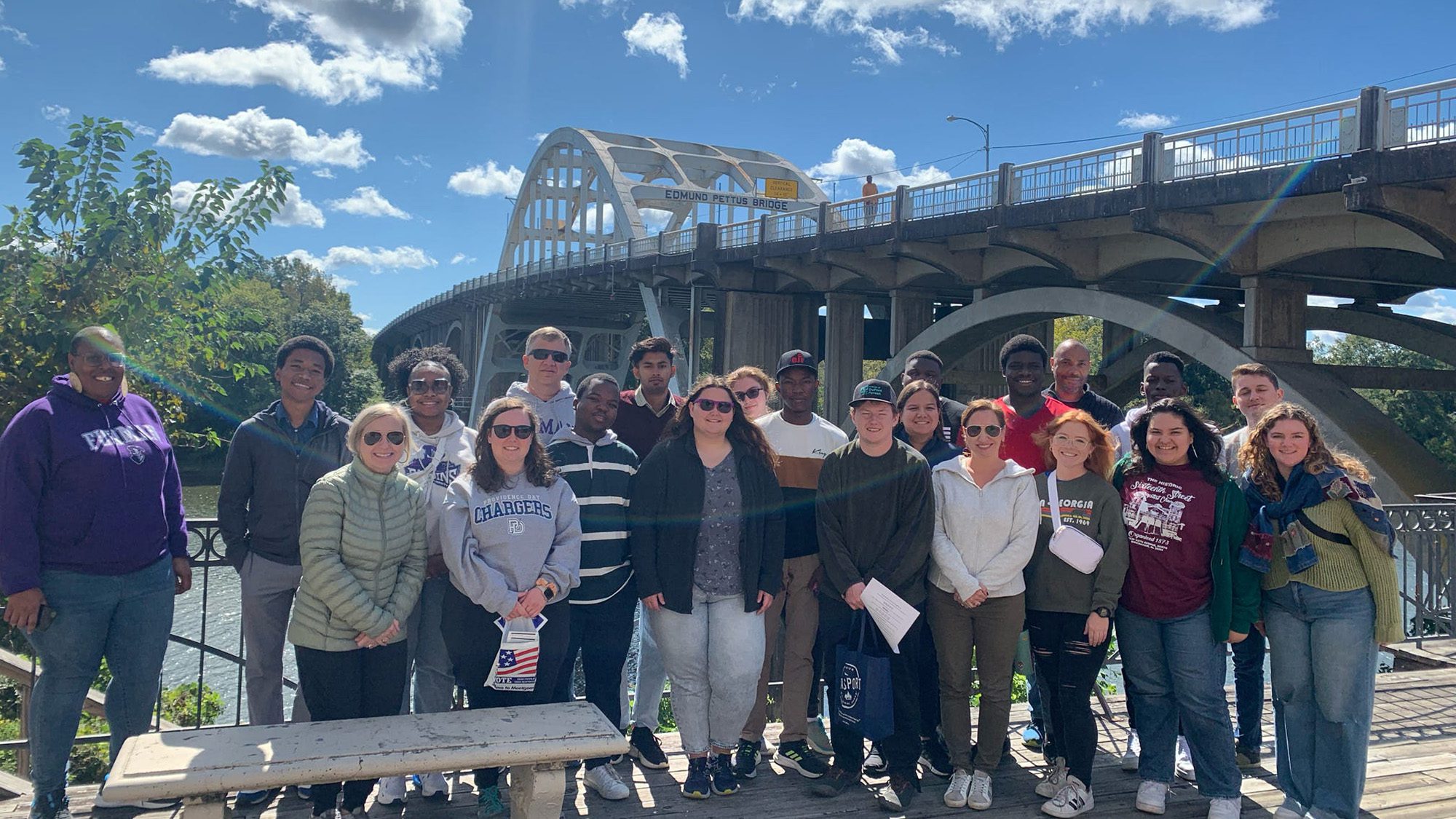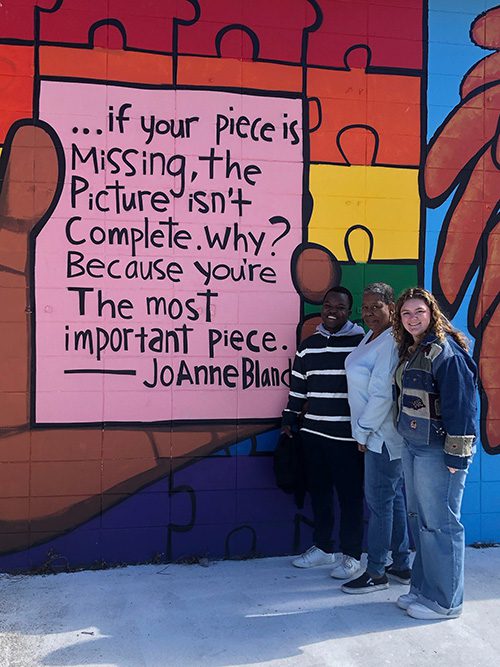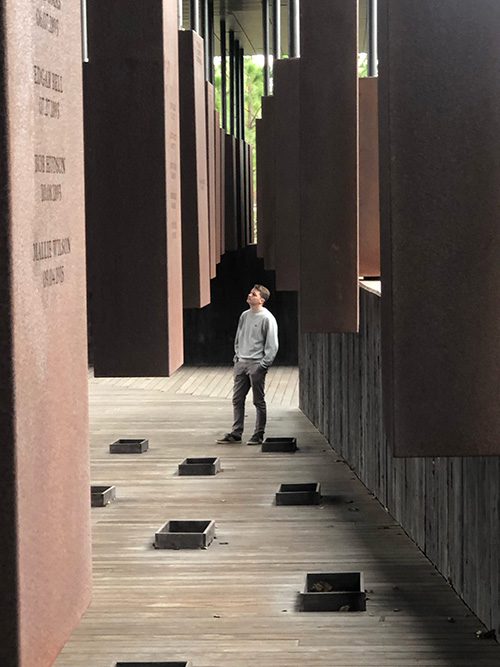Lessons from the Civil Rights Trail challenge students to ask, ‘What now?’

In Selma, Alabama, between visits to the Brown Chapel African Methodist Episcopal Church and the Edmund Pettus Bridge as part of a tour group organized by Furman’s Cothran Center for Vocational Reflection and the Center for Inclusive Communities, Brian Mapakamise ’25 and Meghan Bové ’26 strolled down to a colorful mural in Foot Soldiers Park.

During the Civil Rights Trail tour in October 2023, Brian Mapakamise ’25 and Meghan Bové ’26 met civil rights activist JoAnne Bland in Selma’s Foot Soldiers Park.
The mural, commemorating those who took part in 1965’s civil rights marches from Selma to Montgomery, includes a quote from JoAnne Bland, a foot soldier who had been jailed 13 times by the time she turned 11. Mapakamise and Bové were reading those words – “If your piece is missing, the picture isn’t complete” – when a woman approached them.
“That’s my quote,” she told them. “I was there.”
The chance meeting turned in to a spontaneous addition to the itinerary of Furman’s second Civil Rights Trail through Alabama, held during Fall Break in October, when Bland boarded the tour bus. Her firsthand accounts of the civil rights movement helped complete the picture, said Rolyn Rollins, the Cothran Center’s program coordinator for student initiatives.
“The students were able to see it wasn’t that long ago,” she said. “They think of it as being so distant, but when they met somebody who was there, they realized just how close it was.”
In Birmingham, the group toured the Dynamite Hill neighborhood, named after repeated bombings by the Ku Klux Klan, and visited the Birmingham Civil Rights Institute. In Montgomery, the Civil Rights Trail led through the National Memorial for Peace and Justice, a particularly moving experience for student leader Abijah Leamon ’24.
The memorial commemorates Black victims of racial terror lynchings in the United States with more than 800 steel monuments, one for each county in which a lynching occurred, engraved with dates and names of the victims.

Rohan Halloran ’24 tours the National Memorial for Peace and Justice in Montgomery, Alabama.
“It brought up many emotions for me, like anger and disbelief,” said Leamon, an Africana studies and politics and international affairs double major. “But those emotions motivate me to help others become aware of our history and how it relates to the injustices we experience today.”
Between tour stops, Leamon, a Bell Tower Scholar, led the group of students in dialogue and reflection.
“They left historical places, museums and memorials with more questions about what they learned,” said Leamon. “They reflected on how this connects to their purpose and calling.”
The Civil Rights Memorial Center in Montgomery “was a perfect place to end our tour,” Rollins said. “We’d been hearing about a lot of history, and the memorial center brought up some present-day issues that we need to be activists for.”
The Civil Rights Trail “completely embodies” Furman’s mission to challenge and support lifelong learners to lead lives of meaning and consequence, said Franklin Ellis, associate dean and director of the Center for Inclusive Communities and special assistant to the president for diversity and belonging.
The trip “pushes us toward rigorous inquiry, forcing us to ask, ‘How this was allowed?’ ‘How did it continue?’ ‘How can people treat other people that way?’ – and, possibly, ‘How can we change things for the better for all?’” Ellis said. “Through these questions the experience becomes transformative through the deep reflections that we have about how we can combat these systems as well as how we may have and might still be contributing to them.”
Such reflections are the point of the Cothran Center’s yearly Fall Break program – an Immigration Pilgrimage took students through Georgia last year –and part of its overall mission.
“We always bring it back to vocation,” Rollins said. “The students told me how the experience made them want to be more cognizant of events of the past and the role they play in the present. It helped them shape their thoughts about meaning and purpose in their own lives.”
Last week, during the group’s final meeting after returning to campus, Rollins encouraged them to act on what they learned in Alabama.
“I asked them, ‘What now?’” she said.